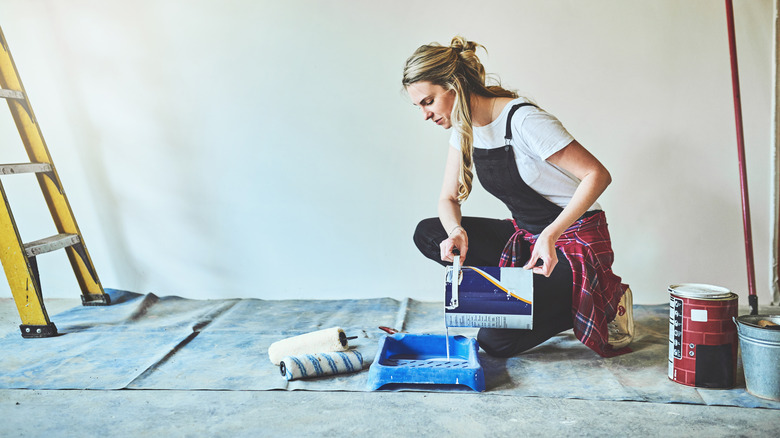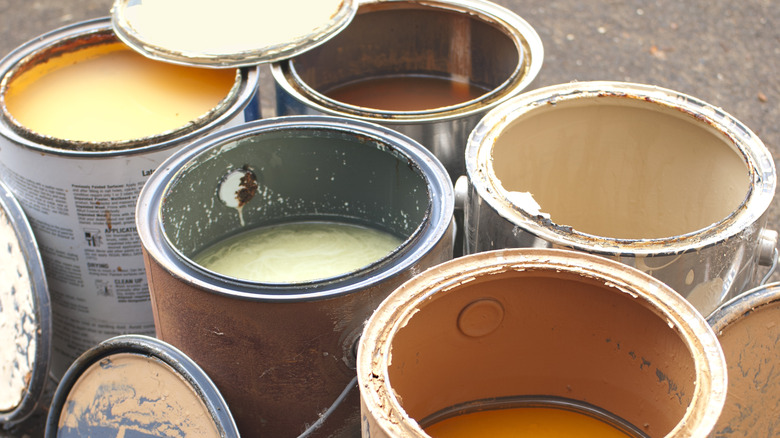The Hack You'll Want To Use Next Time You Seal A Can Of Paint
We all have short memories of what's in those half-used paint cans at the back of the garage. What color is that paint? How much paint is left in that can ... or that one over there? When you finish painting a room or piece of furniture, dip your paintbrush in the paint can one last time and swipe a stripe of paint onto the outside of the can. Where you paint the stripe is the important bit — you need to paint it at the level the colorful liquid is sitting right now, showing how full the can is. You'll know what color and type (glossy or matte, for example) the paint is dry without having to test it again, too.
Alternatives to this hack include dabbing a spot of paint on the lid so, again, you know what the paint looks like when dry — stick a piece of masking tape to the outside of the can to indicate the level. You can also attach the matching paint swatch or chip card from the store as a handy reminder. Swatches are made from paper or cardboard, so just clip a hole in one corner using a hole punch and tie it to the handle or around the width of the can using a piece of string. None of these nifty tricks come close, however, to the simplicity and efficiency of the paint-stripe-at-the-level-left method outlined above.
Why this hack works so well
Why even bother with this step in the painting process, you ask? You want to avoid opening a paint can unless you plan to use it immediately. Every time you pop that lid, you let air into the interior. Paint manufacturers craft a careful balance of pigments, binders, and additives with liquids (water, oil, and solvents) in each can — that's what keeps the paint ... paintable. Anytime you break the seal on a paint can and let air in, you risk disrupting that careful chemical balance, allowing evaporation and drying the paint out. Worse, you could even end up with mold in your paint can. Plus, the only tools you need for this hack are the brush, paint, and can you're already using.
Store your paint cans with the stripe of paint facing out. That way, you can assess at a glance how much and what kind of paint a can contains whenever you open your storage cupboard or need a particular paint hue or type. Store them right-side-up, too. Not only will the stripe of paint show what's left in the can correctly, but the commonly held belief you should store used paint cans upside down for a better seal is a myth. It's more likely to cause leakage than preserve your paint. A better choice is fitting a piece of aluminum foil over the lid.

